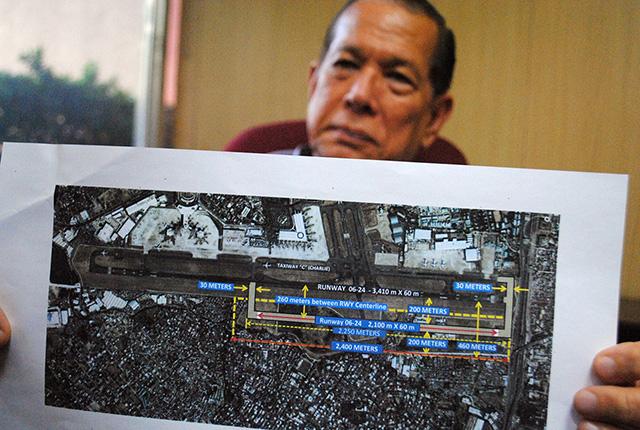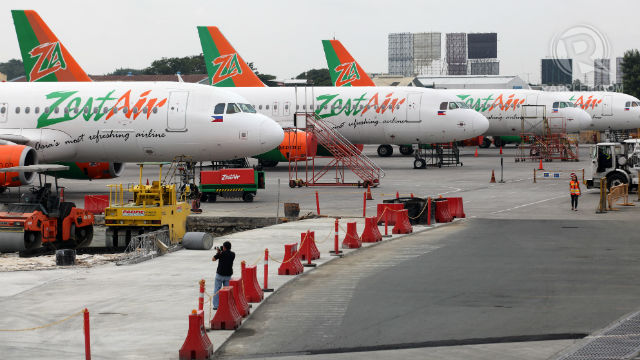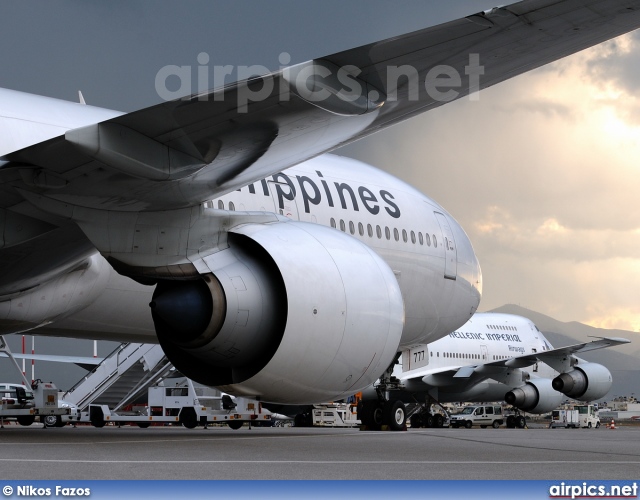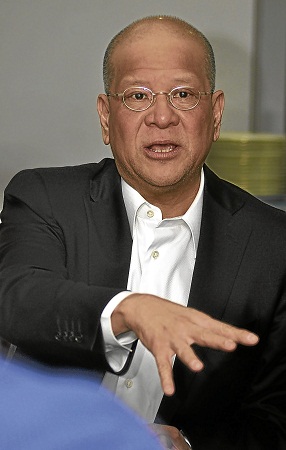For an airline that has had problems producing a decent profit in years, PAL is surprisingly the object of intense attention from the Lucio Tan Group and San Miguel. Any sane business executive would have gone out of his way to get rid of the airline at the first opportunity.

In a disclosure to the Philippine Stock Exchange early this week, San Miguel confirmed discussions with the Tan group regarding control of the airline. From the start, the partnership between the Lucio Tan Group and San Miguel had been rocky. There are elements within the Tan group staunchly against the partnership with San Miguel. That’s why concluding the deal took so long.
But the 80-year old Tan, known to his business associates as Kapitan, was getting tired of having to constantly recapitalize PAL, good money after bad, and having to deal with serious labor problems. Kapitan, however, loves giving out his calling card that says he is Chairman of PAL. He reportedly told a close associate that he likes the prestige PAL gives him.
But there came a point when the headaches the airline gave him started to get to him. Year after year PAL delivered record losses in the hundreds of millions. If it is not because of an abrupt rise in fuel prices, it is about the uncompetitive cost of operations because of an ageing fleet and high overhead in an era of budget carriers.
Ramon Ang of San Miguel who flies a plane himself, found the idea of running Philippine Airlines fascinating. In many conversations with him, he said he knows how to make the airline profitable. But he said it would take a minimum of $1 billion in fresh investments in a re-fleeting program. Savvy marketing is the other requirement.
For a while, RSA was torn between his desire to run PAL and the reality that it would require so much money to turn it around. He must have seen PAL like an alluring but high maintenance mistress. At one point, he told me he will no longer pursue the chance to get into PAL. Then, he turned around and struck a deal with the Kapitan.
I don’t know if the fact that Manny Pangilinan tried to make a deal with Kapitan on PAL and failed was the trigger for RSA to pursue a deal to a successful conclusion. There seems to be an unspoken rivalry between the two.
The GMA7 deal is another indication of RSA’s drive to win one over MVP. Well, the score is 2-1 in favor of RSA who won PAL and GMA7. But MVP bested him on Meralco, which RSA had to exit shortly after, albeit very profitably. MVP seems to have the upper hand in this contest given how much of a profit maker Meralco is.
Anyway, RSA struck a complicated deal on PAL. He realized how much Kapitan enjoyed being called PAL Chairman so he agreed to buy only 49 percent with Kapitan retaining 51 percent and the Chairmanship. But RSA got full management control of PAL. All Tan relatives including daughter, son and brother who held key positions in the airline exited when RSA came on board.
Other relatives, including a Tan son-in-law responsible for other companies that did business with PAL were not too happy. It didn’t help when RSA started to shift the maintenance contract away from Lufthansa Technik that is partly owned by Kapitan. Other services were likewise shifted based on costs and quality of service.
I understand many close associates never ceased whispering to Kapitan how the decision to give management control to RSA was wrong. A persistent story told to Kapitan, according to my sources, is how RSA received commissions from Airbus and Boeing for the re-fleeting program.
Suspected commissions on airplane purchases had always been a sore point in PAL. It will be recalled that similar gossip caused the break-up between Tonyboy Cojuangco and Kapitan shortly after PAL was privatized. Pure gossip led to loss of trust in that early partnership and made Kapitan the accidental airline owner.
When a similar gossip reached RSA, he acted differently from Cojuangco. According to sources close to him, RSA immediately wrote both aircraft manufacturers to send a certified history of commissions they have paid on PAL purchases from way back. The long and short of it is that none were paid to him.
The thing is… Kapitan had been ambivalent about what he wanted to do with PAL. About August last year, we heard that the LT Group wanted to sell its 51 percent to SMC. There was a face-to-face meeting which RSA confirmed to me when we last met. They progressed as far as the drafting of a Share Purchase Agreement.
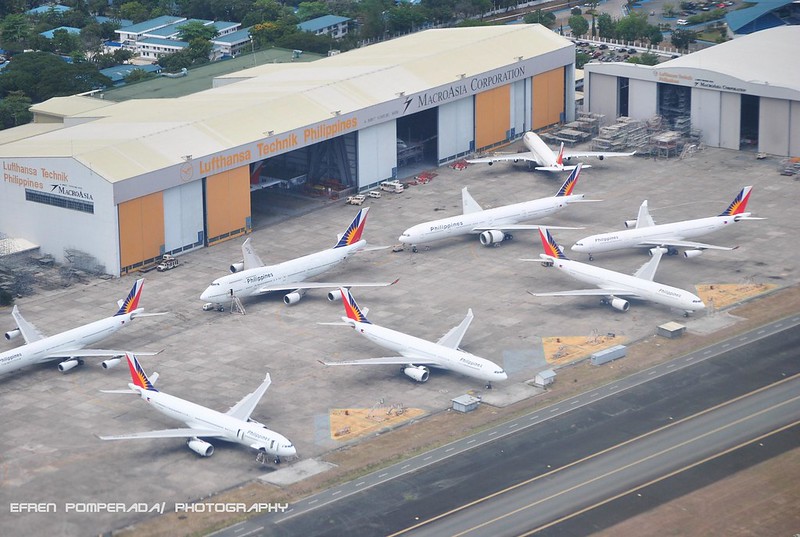
But instead of signing the agreement, the LT Group submitted a written offer to buy the 49 percent of SMC instead. RSA immediately accepted the offer on the condition that the LT Group will also immediately pay SMC all the advances made for the re-fleeting. SMC’s equity contribution of $500 million when it bought into PAL plus another $500 million in advances all went into the re-fleeting program.
Some months later, or early this year, the LT Group, through UBS, offered to sell its 51 percent to RSA. After full agreement on the Term Sheet, the final draft was submitted to the LT Group early last month with signing being planned shortly thereafter.
But Kapitan vacillated again and advised RSA they would rather buy out SMC and requested for the details of the advances made for the re-fleeting. I heard they are trying to raise the $1 billion from among the various LTG companies.
The last time I talked to RSA a few weeks ago, he said he doesn’t mind it going one way or the other but would rather that a buy-out be completed as soon as possible. A delay is not good for the airline, its customers and staff.
Indeed, RSA said he prefers the shoot-out as agreed between SMC and the LT Group. The shoot-out right is an option in the shareholders’ agreement to resolve deadlocks in the management of the company. Each party can offer a price it is willing to buy out the other. The higher bidder must buy, and the loser must sell, the significant share in the company.
Using the $500-million price tag SMC paid for the 49-percent interest in PAL, Kapitan should get a little more than that for the 51 percent it now owns. Given the uncertainties in the airline industry, it is difficult to see why the octogenarian Kapitan would want to put up $1 billion of his money to buy out San Miguel and pay SMC advances for the re-fleeting.
Some sources familiar with how Kapitan thinks told me it is likely that pride is keeping the taipan from making a purely business decision on PAL. I heard he also had some regrets giving up control over his tobacco business to Philip Morris. It isn’t just money that’s on the table now. We are about to see the monetary value of ego.
I guess the super rich are really different from you and me. Would you think the prestige of being known as the Chairman and owner of PAL, given its horrible profitability record and iffy prospects, is worth $1 billion? Or would you, specially if you are already 80 years old, rather cash in now while there is someone willing to buy your 51 percent?
The falling out between Tan and RSA must have been bitter because ANC reported last Wednesday that there are overtures for MVP’s MPIC to join LTG in buying out San Miguel. My sources told me it was Wash SyCip, who had always looked down on the unpedigreed RSA, together with a Tan son in law who suggested sounding out MVP.
Kapitan may not realize it but he is playing a high stakes poker game with RSA. He had better have nerves of steel to play the much younger RSA who seems to have more experience and indeed, thrives in competitive high stakes games like this.
Then again, the Kapitan may just do San Miguel stockholders a big favor and take back that albatross of an airline from continuing to depress earnings and future prospects for the diversified conglomerate. Speaking like a stockholder, there are after all, better ways of using that $1 billion to fatten up San Miguel’s bottom line than waiting many years for PAL to become a jewel, if it ever will.
If RSA is really itching to run an airline, it may be easier to put up a new airline the way John Gokongwei did and not be burdened by PAL’s heavy sins of the past.
Boo Chanco’s e-mail address isbchanco@gmail.com. Follow him on Twitter @boochanco



+Adrian+Smith.jpg)


